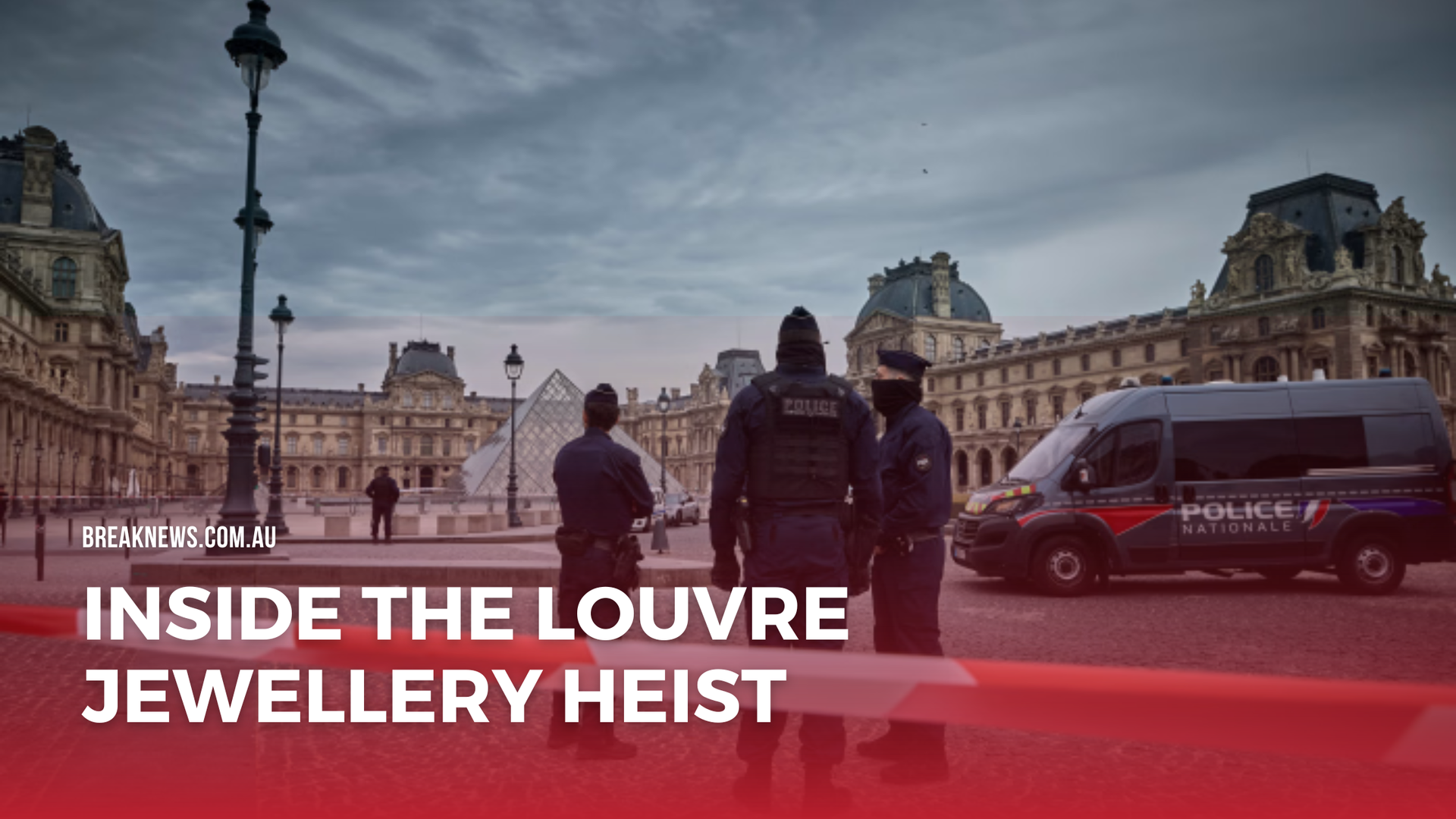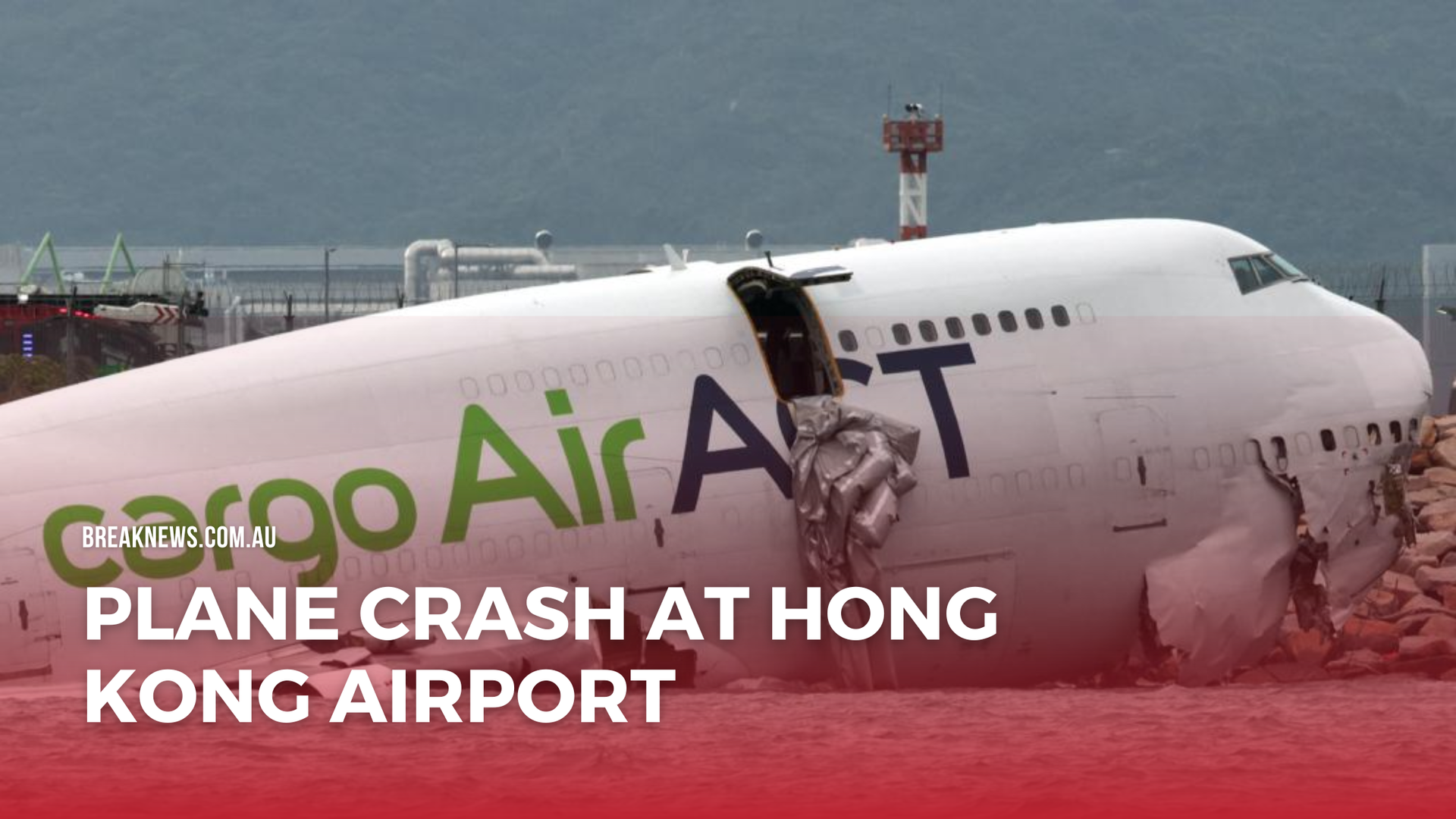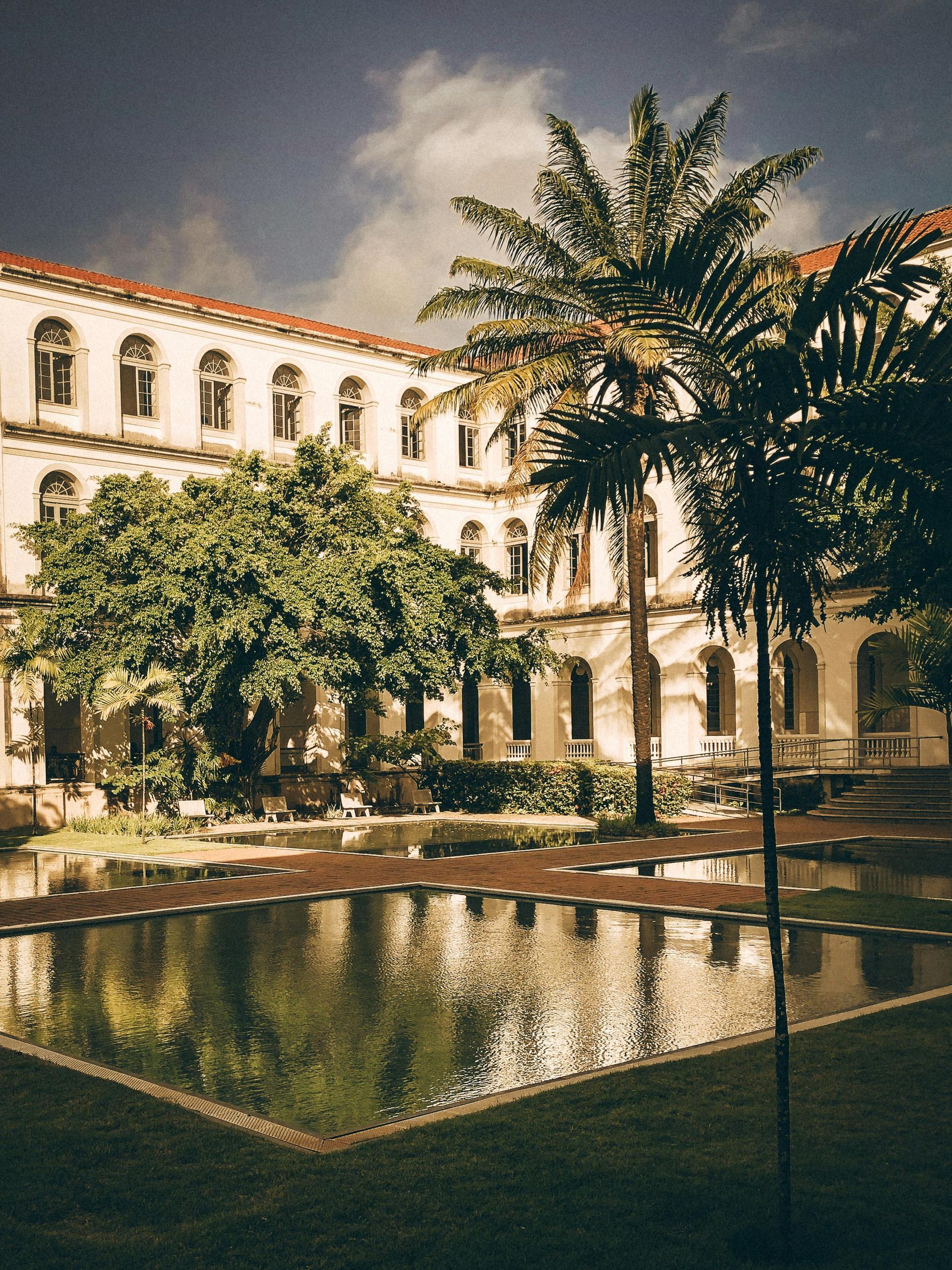Breaking News

It’s a question that comes up more often than you might think — if you have a boyfriend, does that automatically make your relationship a de facto one under Australian law ? The short answer is no . Simply being in a romantic relationship, no matter how serious, doesn’t automatically mean you’re legally recognised as de facto partners. To be classified as de facto in Australia, there’s a lot more involved than just being a couple. The law considers how long you’ve been together, whether you live under the same roof, how you handle your finances, and the level of commitment you’ve both shown toward building a life together. Understanding these details is important because once your relationship meets the de facto threshold, it can affect everything from property rights and financial responsibilities to migration and custody matters. What Does a De Facto Relationship Actually Mean? In simple terms, a de facto relationship is when two people, who are not legally married, live together as a couple on a genuine domestic basis. It applies equally to both heterosexual and same-sex couples. However, the law doesn’t define a single test to determine whether you’re de facto. Instead, it looks at a range of factors — things like how long you’ve been together, whether you share expenses or property, if you have children, and even how others view your relationship. So, having a boyfriend or girlfriend alone doesn’t make it de facto. You could have been dating for years without being classified as such if you maintain separate homes or finances. On the other hand, couples who’ve been together for a shorter time but live together and share a household may meet the criteria. This distinction is especially important for people navigating family law and migration matters , where proving a de facto relationship can directly affect visa eligibility or asset division. Consulting experienced migration lawyers in Sydney can help you understand how your relationship status might impact a visa application or other legal processes. Does Living Together Automatically Make You De Facto? Not necessarily — but it’s a strong indicator. If you and your partner live together, share rent or mortgage payments, split bills, and handle everyday responsibilities together, you’re more likely to be viewed as a de facto couple. The general rule of thumb under Australian law is that living together for at least two years establishes a de facto relationship. That said, there are exceptions. If you share a child or if one partner has made significant contributions — financial or otherwise — to the relationship, the law may still recognise you as de facto even if you haven’t reached the two-year mark. It’s a case-by-case assessment, which is why many couples seek professional advice early on. Understanding your legal standing before issues arise can save a lot of stress later — especially when property, separation, or child custody questions come into play. If you’re based in Queensland and navigating family matters, professional child custody legal services in Brisbane can guide you through your parental rights and obligations under the Family Law Act. How Long Do You Need to Be Together? Generally, Australian law uses the two-year rule as a guideline for establishing a de facto relationship. But as mentioned, that timeline isn’t absolute. You can be recognised as de facto sooner if you share a child, if your relationship is registered with the state or territory, or if one of you has made substantial contributions to the relationship — whether financial, emotional, or domestic. For example, if one partner has invested in renovations to the other’s property or sacrificed their career to support the household, that contribution may carry significant legal weight even in shorter relationships. It’s less about counting months and more about demonstrating the genuine nature and interdependence of your relationship. Proving a De Facto Relationship — What Counts as Evidence? When it comes to official matters like Centrelink benefits, migration applications, or property settlements, you may be asked to prove your de facto status. Evidence can take many forms — joint bank statements, shared bills, rental or mortgage documents, photos from holidays, or even statements from friends and family. The goal is to show that your relationship is genuine and ongoing, not just casual dating or a convenience arrangement. The more consistent and verifiable your evidence, the stronger your position. For migration purposes in particular, immigration authorities take a close look at financial interdependence, shared living arrangements, and mutual commitment. If you’re applying for a partner visa, working with migration lawyers in Sydney can ensure your documentation meets the required legal standard and reflects the authenticity of your relationship. Why Does It Matter If You’re Legally De Facto? Being recognised as de facto under Australian law isn’t just a label — it comes with rights and responsibilities that are similar to those of married couples. For example, if your relationship ends, you may be entitled to seek property settlements, spousal maintenance, or parental arrangements. It also matters for other legal situations — such as applying for government benefits, superannuation claims, and partner visa applications. In the unfortunate event of a separation involving children, knowing where you stand legally is crucial. Seeking professional child custody legal services can help you navigate parental arrangements and ensure that the best interests of your children are protected while your rights as a parent are upheld. What If You’re Unsure About Your Relationship Status? It’s perfectly normal to be uncertain — especially if you’ve been living together but aren’t sure whether the relationship crosses into de facto territory legally. If you’re in doubt, you can take a few practical steps. Register your relationship with your state or territory, as that can provide official recognition and make future legal processes easier. Keep records of shared expenses, assets, and living arrangements — these can serve as evidence if you ever need to prove your relationship status. Most importantly, if you’re dealing with property, visa, or family law concerns, get professional advice early. Laws around relationships, migration, and custody can overlap in complex ways, and every couple’s situation is unique. A consultation with experienced migration lawyers in Sydney or family law specialists can provide clarity and direction before small issues turn into major legal challenges. Bringing It All Together So, is having a boyfriend automatically the same as being in a de facto relationship? Not quite. Australian law looks beyond titles and focuses on the reality of your life together — where you live, how you share responsibilities, and the level of commitment you’ve both demonstrated. If you and your partner live together, share finances, and plan your lives as a team, then yes — you may be in a de facto relationship, even without the official label. But if you’re still dating independently with separate households and finances, the law won’t see it that way. Ultimately, understanding your relationship’s legal status helps you prepare for the rights and responsibilities that come with it — whether you’re applying for a visa, purchasing property, or managing child arrangements. And if you’re unsure where you stand, reaching out to migration lawyers or family law experts can give you the clarity and peace of mind you need. Author Bio: Jeryl Damluan is a seasoned SEO Specialist and Outreach Specialist at Justice Network . She excels in building authority links and amplifying online presence for law firms and businesses through strategic content creation and digital marketing.

For many homeowners, moving to a new property often comes with a crucial question — can you transfer your existing mortgage to your next home? The concept, known as mortgage portability , allows borrowers to carry over their current home loan to a new property without refinancing. This option can be appealing for those looking to avoid new loan applications or changes to interest rates, but it is not available to everyone. Understanding how it works, and when it applies, is essential before making any financial moves. Understanding Mortgage Portability Mortgage portability essentially allows you to “port” your current loan — including the interest rate, repayment structure, and remaining balance — to a new property. This can help you avoid breaking your existing loan contract, which might otherwise attract costly termination or refinancing fees. However, not every mortgage product offers this feature. Even when portability is permitted, approval depends on several factors such as the value of the new property, the loan amount, and your financial position at the time of transfer. Lenders also retain the right to decline portability if the new property does not meet their lending criteria. Eligibility and Requirements Most Australian lenders impose strict eligibility requirements before approving a mortgage transfer. Typically, the borrower must remain the same as on the original loan, meaning ownership structures cannot change. The new property is also assessed to ensure it aligns with the lender’s acceptable security standards. Lenders usually require that the sale of your existing property and the purchase of the new one occur simultaneously or within a short window. If timing does not align, a temporary bridging loan may be necessary to cover the gap between transactions. Additionally, your loan account must be in good standing. Missed repayments or signs of financial distress can disqualify you from approval. Some lenders also expect the new property to be similar in value or type — for example, transferring a loan from a freestanding house to an apartment might raise issues depending on the lender’s policy. Costs and Associated Fees While mortgage portability can be more economical than refinancing, it is not entirely cost-free. Common expenses include a portability fee charged by your lender, property valuation costs, and settlement or conveyancing fees. In some cases, government charges may also apply if the property is located in another state or territory. If your existing loan includes Lenders Mortgage Insurance (LMI) and your new purchase still exceeds 80% of the property value, you might need to pay LMI again. For borrowers with fixed-rate loans, early termination or “break” fees can also apply if any aspect of the loan needs to be adjusted during the transfer. Before proceeding, it is advisable to consult with financial or legal professionals to review the total costs and compare them with potential refinancing options. For matters involving property division or shared ownership, guidance from expert property settlement lawyers can ensure your financial interests are protected. The Process of Transferring a Mortgage Transferring a mortgage involves several coordinated steps. First, the borrower must contact their lender to confirm eligibility and request a formal mortgage portability application. The lender will typically arrange a professional valuation of the new property to verify that it meets lending standards. Once approved, new mortgage documents are issued, reflecting the transfer to the new property while maintaining your existing loan terms. The conveyancing process — which includes coordinating settlement dates and finalising title transfers — must be carefully managed to avoid delays. This is where the assistance of trusted conveyancers CJC Law can prove invaluable. Their expertise ensures the legal aspects of your mortgage transfer and property settlement proceed smoothly and without unnecessary complications. Advantages and Limitations The primary advantage of mortgage portability lies in convenience and cost savings. Retaining your existing loan allows you to avoid lengthy refinancing applications, maintain your current interest rate, and bypass potential exit fees. It also provides continuity, which can be particularly beneficial if market rates have risen since your original loan was approved. However, the process is not without its drawbacks. Not all loans are eligible for portability, and the lender’s approval process can be stringent. The simultaneous settlement requirement can also create logistical challenges, especially if your property sale or purchase faces unexpected delays. Additionally, portability may not be the best choice if your financial situation has changed significantly or if you wish to increase your loan amount. In such cases, refinancing might offer better flexibility and access to updated loan features. Final Considerations Transferring a mortgage to a new property can be a practical and financially sound solution — provided you meet your lender’s criteria and understand the implications. It allows you to move homes without losing the benefits of your existing loan, but success depends on careful coordination, compliance with conditions, and professional guidance. Before making any decisions, take the time to review your loan agreement, speak with your lender, and consult legal and financial experts. Understanding your obligations and options will help you make an informed choice that aligns with both your immediate needs and long-term financial goals. Author Bio: Jeryl Damluan is a seasoned SEO Specialist and Outreach Specialist at Justice Network . She excels in building authority links and amplifying online presence for law firms and businesses through strategic content creation and digital marketing.

The Louvre jewellery heist wasn’t just any robbery—it’s being called one of the boldest crimes Europe has seen in recent years. In broad daylight, masked thieves slipped into the world’s most-visited museum and made off with priceless national treasures. Vanishing in minutes, they left behind shocked visitors and global headlines. This drama unfolded right in the heart of Paris, targeting jewels that are not just valuable, but part of French history itself. It’s a story that resonates far beyond France: for Australians and the global community alike, it’s a wake-up call about the vulnerability of even the most secure cultural institutions. From the initial chaos to the worldwide search for missing artefacts, this case shines a light on museum security, the international art market, and just how quickly centuries of heritage can be threatened. Here’s how it all happened—and why it matters. Heist in Broad Daylight: How the Louvre Jewellery Robbery Unfolded It’s not every day that a brazen robbery unfolds right before tourists’ eyes, especially inside the world’s most famous museum. Yet that’s exactly what happened on a bustling morning when a crew of masked thieves slipped into the Louvre’s Apollo Gallery, home to the French crown jewels. The timing was crucial: the thieves struck shortly after the museum opened, when staff were just settling in and the first wave of visitors was filtering through the ornate halls. Surveillance footage later revealed how calm and coordinated the group was. Using clever disguises—posing as construction workers in yellow safety vests—they blended seamlessly with legitimate maintenance crews. This ruse gave them the confidence to move about the halls without arousing immediate suspicion, despite the ever-present CCTV cameras and vigilant staff. Within minutes, chaos erupted in the gilded Galerie d’Apollon as alarms rang out. Staff and panicked visitors scrambled, forced out of the gallery as the thieves smashed glass cases and scooped up irreplaceable jewels. Museum officials acted quickly, locking down parts of the building and evacuating courtyards and nearby streets along the Seine, trying to ensure everyone’s safety amid uncertainty. This daylight attack, carried out as tourists looked on, stunned locals and baffled authorities. The location and timing revealed a shocking vulnerability at one of Paris’s best-guarded landmarks. It didn’t take long for the news to ripple across the globe, leaving people everywhere asking: how could something like this happen, right under the nose of museum staff and security? What Was Stolen in the Heist: Emeralds, Crowns and Priceless Jewels The impact of the Louvre robbery becomes crystal clear when you look at the treasures that vanished. The thieves didn’t just grab random valuables—they specifically targeted a collection of jewels tied to generations of French royalty, each piece holding centuries of history and unmatched craftsmanship. Among the most coveted items was a striking emerald necklace, said to have once belonged to Empress Eugénie, the influential wife of Napoleon III. This necklace formed part of a historic set that also included a pair of dazzling emerald earrings and a meticulously crafted reliquary brooch. Together, these gems were more than just precious stones; they represented the personal adornments of queens and emperors, passed down through royal lines. The stolen items were displayed in the Apollo Gallery alongside other artefacts belonging to Queen Hortense and Queen Marie-Amélie, linking them to pivotal moments in French cultural heritage. The loss of these jewels is not simply about financial value—they’re considered irreplaceable, a part of the legacy that connects modern France to its regal past. This theft has delivered a major blow to Paris and to museums worldwide. With jewels like the Regent Diamond and other national treasures left vulnerable, the event has reignited debates about safeguarding heritage that we all cherish. It’s a chilling reminder of how quickly the world can lose pieces of its shared history. How Did the Thieves Do It? Tools, Disguises and Their Daring Escape The meticulous planning and nerve required for the Louvre jewellery heist point to a crew of seasoned professionals. The group executed their plans with clockwork precision, beginning with disguises that allowed them to move through the museum unnoticed. Dressed as construction workers, complete with yellow safety vests and hard hats, they looked like they belonged inside a building where maintenance is part of daily life. Once in position inside the Apollo Gallery, the thieves wasted no time. Armed with battery-powered disc cutters and angle grinders—tools that can cut through reinforced glass—they shattered the display cases in under four minutes. They worked quickly but calmly, knowing the response time of staff and alarms was limited. With the jewels in hand, the group fled the museum and made their escape using a vehicle equipped with a mechanical lift or extendable ladder, a clever nod to their “worker” disguise. Parisian streets, traffic patterns, and proximity to the Seine likely played into their chosen getaway route. Locals later reported a suspicious van set alight just blocks away, used to destroy any forensic evidence. Urban infrastructure played an unexpected role in their plan. Easy access to the Louvre’s surroundings and possible exploitation of ongoing public works provided the ideal cover for both entry and escape. By the time authorities arrived on scene, the thieves had disappeared—leaving behind only shards of glass and a trail of questions about security lapses. Security Failures and the Louvre’s Investigation into the Robbery The Louvre prides itself on state-of-the-art security, but the jewellery heist exposed gaps that even the best-prepared institutions can overlook. The robbers’ ability to breach the Apollo Gallery and smash display cases so rapidly points to vulnerabilities in both physical infrastructure and personnel vigilance. Museum staff responded quickly once alarms sounded. A vigilant worker noticed the unusual activity and triggered the emergency protocol—contacting security forces and ushering visitors to safety. The museum was promptly evacuated, and police cordoned off courtyards and nearby streets, demonstrating well-drilled crisis management. Investigators reviewing CCTV footage were able to confirm the sequence of events and get a detailed look at the masked robbers in action. High-resolution images and video of the theft, shared with the media and public, became key pieces of evidence in the hunt for the culprits. Reports in sources like Le Parisien highlighted the professionalism of the crew and the efficiency of their four-minute operation. The incident has led the Louvre and other institutions worldwide to reevaluate display security, staff response protocols, and the overall physical safeguards required for national treasures. Experts suggest that partnering with top security providers—such as the leading firms listed in Australia’s top five security companies for 2024 —could help museums bolster their defences with advanced technology and rigorous training. In the aftermath, rebuilding public trust and protecting cultural heritage is now more urgent than ever. Reactions from French Leaders and What Comes Next The Louvre jewellery heist has sparked strong reactions from France’s top officials. President Emmanuel Macron condemned the crime as an attack on national heritage, vowing that every effort would be made to recover the lost treasures and bring those responsible to justice. Culture Minister Rachida Dati described the theft as a “tragedy for the French people” and promised immediate security reviews at major museums. Interior Minister Laurent Nuñez echoed these sentiments, stressing that security for public collections would be upgraded and that new protocols are already under discussion. These events have prompted a wider debate both in France and globally about museum security and the protection of irreplaceable cultural artefacts. The international art world is watching closely to see how Paris responds, knowing that the lessons learned here could shape the future of museum security worldwide.

The crash of an Emirates SkyCargo Boeing 747 at Hong Kong International Airport has captured global attention and sparked urgent questions for Australian travellers and the wider aviation world. In the early hours of Monday, the cargo flight arriving from Dubai’s Al Maktoum International Airport veered off the airport’s north runway and plunged into the sea. The incident has significant implications, not just for flight safety in Hong Kong, but also for confidence in airline operations during severe weather events. Given Hong Kong airport’s reputation as one of Asia’s busiest and most advanced aviation hubs, any major incident is newsworthy—especially one involving a high-profile cargo operator like Emirates. Early reports confirm loss of life and a massive emergency response, with authorities now searching for explanations and reviewing safety protocols. This article provides a clear and up-to-date account of the crash, the immediate aftermath, and the broader debates about aviation safety and weather risks. Sydney readers can expect ongoing updates as more information becomes available and investigations continue to unfold. Emirates SkyCargo Crash at Hong Kong Airport Sparks Global Concern The Emirates SkyCargo crash at Hong Kong International Airport has quickly become both a human tragedy and a headline-grabbing event for aviation observers around the world. Flight EK9788, operated by a Boeing 747-481, was completing a routine long-haul cargo run from Dubai to Hong Kong when its landing ended in disaster. As the aircraft made contact with the airport’s north runway, something went wrong in those crucial initial moments—setting a chain of events in motion that would see the aircraft leave the paved runway and enter the surrounding sea. The incident is particularly significant given the stature of Hong Kong International Airport, which serves as a critical gateway for international freight and travellers. Emirates SkyCargo is one of the most respected global freight operators, known for strict safety standards and experienced crews. The crash has already prompted intense public interest—not only for what it says about cargo operations and weather risks, but also for the potential vulnerabilities at airports built so close to the water. While the specific mechanical and environmental factors at play are still under investigation, early speculation points to a combination of challenging weather conditions, airport design, and operational decisions. This crash has re-ignited debate about runway safety during typhoon season in Asia, the resilience of airport infrastructure like Hong Kong’s, and how quickly rescue teams can respond when aircraft end up in areas that are difficult to reach. These wider themes will be analysed in depth, with the following sections exploring how the incident unfolded and what it means for aviation going forward. How the Plane Veered Off Hong Kong Airport's North Runway Into the Sea Emirates SkyCargo flight EK9788 lost control while landing on Hong Kong International Airport’s north runway at approximately 3:50am local time. According to ADS-B flight tracking data, the Boeing 747 touched down at a time when weather conditions were challenging. Eyewitnesses and authorities report the aircraft began veering left almost immediately after its wheels contacted the runway surface. Despite efforts by the crew to bring the plane to a halt, it failed to stop within the available runway distance. The aircraft continued off the paved surface, breaching the perimeter and sliding down the embankment into the sea. The airport's location on reclaimed land—with runways flanked by water—meant there was little margin for error. This setup contributed to the severity of the incident and complicated the rescue response. Sea Crash Rescue Response and Plane Crash Casualties The moments after the crash were marked by a rapid and challenging rescue operation. With the Boeing 747’s fuselage partially submerged in the sea off the airport’s north runway, Hong Kong authorities faced a crisis situation that demanded instant action. The fate of the crew and the aircraft itself hinged on the speed and coordination of emergency services operating in unfamiliar, hazardous conditions. There were several crew members on board, with initial statements confirming both survivors and casualties. The nature of this crash—unfolding not on solid ground but in the open water—introduced risks and complications unseen in most airport emergencies. Swift triage, evacuation, and medical intervention became critical, highlighting the difference between sea-based and typical runway incidents. Hong Kong’s fire, police, and medical teams all played vital roles, drawing on specialised training and equipment for marine rescue scenarios. Despite their preparedness, the unusual location put standard protocols to the test, forcing first responders to adapt and improvise. Further details on these rescue efforts, along with confirmed figures for injuries and fatalities, are provided in the following section. Emergency Teams Battle the Sea Crash Aftermath Emergency teams responded immediately after the crash, activating the Airport Emergency Centre and mobilising marine police, fire services, and medical crews to the site. Firefighters used inflatable rafts and marine craft to reach the wreckage, despite choppy waters and limited visibility. The accident’s proximity to deep water increased both the urgency and danger of the operation. Coordinated efforts between airport, marine, and medical units were essential for evacuating injured crew and recovering those pronounced dead at the scene. Delays in reaching the submerged aircraft and extracting victims highlighted the inherent challenges of water-based rescue on reclaimed land. The operation served as a stark reminder of the complex risks faced during such rare but serious airport disasters. Did Typhoon RagaSa and Severe Weather Influence the Crash? Typhoon RagaSa was a significant factor influencing flight operations at Hong Kong airport on the day of the Emirates SkyCargo crash. At the time of the incident, strong crosswinds, fluctuating visibility, and active storm warnings were reported across the territory. Meteorological data showed wind speeds exceeding typical safety thresholds for large aircraft landings, particularly for heavy cargo planes like the Boeing 747. Official advisories from Hong Kong’s Civil Aviation Department indicated heightened alert levels, with some flights diverted or delayed as Typhoon RagaSa passed nearby. In addition, Super Typhoon activity in the Philippines contributed to unstable conditions across the South China Sea, amplifying the overall risk profile for all incoming and outgoing flights. Despite the risks, Emirates SkyCargo flight EK9788 proceeded with its scheduled landing, a decision now under scrutiny as investigations into the crash progress. Weather is always a factor in aviation safety, but typhoon conditions introduce variables—like wind shear, sudden gusts, and torrential rain—that can overwhelm even experienced crews and the best onboard technology. Aviation safety protocols at Hong Kong International Airport are designed to manage such risks, but the incident has prompted questions about cargo flight oversight, risk assessments, and whether any decisions made that day breached established typhoon operating limits. The investigation’s findings will shape future policy and likely influence cargo and passenger flight protocols across the Asia-Pacific. Airport Safety Debates and Hong Kong's Political Backdrop The Emirates SkyCargo crash has immediately reignited debate about infrastructure and public safety at Hong Kong International Airport. As the city faces ongoing political tensions and a vocal pro-democracy movement, questions have been raised about government priorities, transparency, and the sufficiency of current aviation protocols. Many Hong Kong residents have voiced concerns on social media, arguing that the crash exposes weaknesses in airport safety management and oversight. Expert commentators point to the pressure placed on local authorities by major transport accidents, which often become lightning rods for criticism of broader governance issues. In the wake of the crash, pro-democracy advocates have drawn parallels with earlier controversies, suggesting a lack of public accountability and insufficient consultation on infrastructure safety. For Australians following the story, this reflects a dynamic seen in other global contexts—where transport incidents spark wider debates about public trust, government competence, and the tension between economic priorities and safety standards. These arguments mirror discussions held in New South Wales and beyond about government response to crises and public transparency. For a detailed analysis of political accountability in Australia, readers can consult the Break News opinions page , which explores similar themes in the context of health policy and crisis management. In Hong Kong, the crash has become a touchpoint for wider policy debate, with calls for independent reviews and improvements to airport and aviation regulation. How Runway Design and Coastal Geography Shaped the Hong Kong Airport Crash Hong Kong International Airport’s distinctive design, built almost entirely on reclaimed land and surrounded by the South China Sea, played a pivotal role in the severity of the Emirates SkyCargo crash. Unlike traditional inland airports, both of Hong Kong’s main runways terminate just metres from deep water, leaving little margin for error when an aircraft overshoots or veers off the paved surface. This geography sharply increases the risk of runway excursions ending in water rather than on land. Runway End Safety Areas (RESAs) are designed to slow or stop aircraft that exit the runway, but their effectiveness is limited when water is immediately adjacent. In the case of the north runway, the short distance between the tarmac and the coastline meant there was no buffer zone—turning even a minor runway excursion into a major marine rescue scenario. The incident highlights the unique engineering challenges faced by airports like Hong Kong’s. Emergency evacuation procedures must account for rapid water ingress, difficult access for rescue vehicles, and hazards posed by tides and currents. The swift activation of marine and airport emergency services was vital, but the design limitations inherent to reclaimed land airports remain a serious concern. As calls grow for stricter oversight and possible infrastructure upgrades, Hong Kong’s experience may influence future international safety regulations for coastal airports worldwide.






